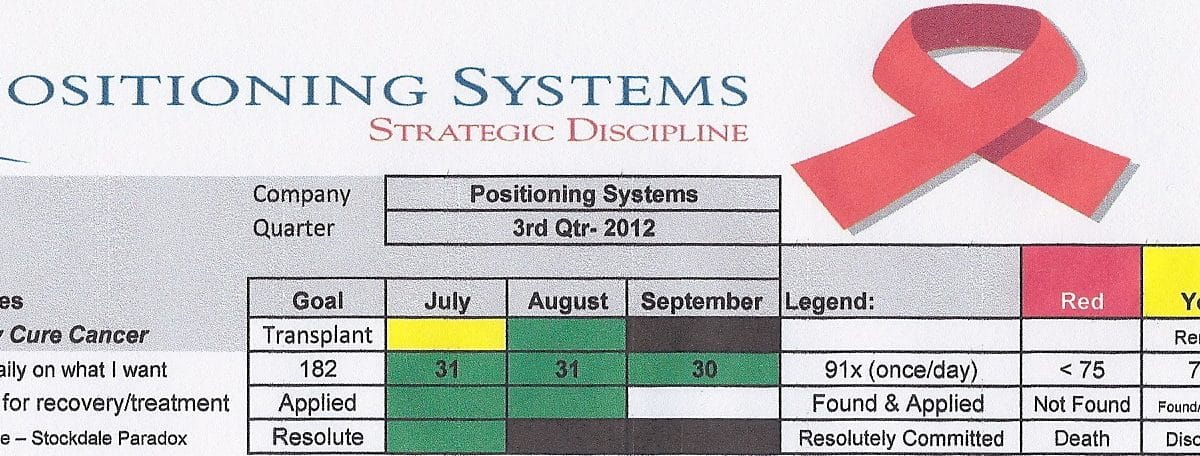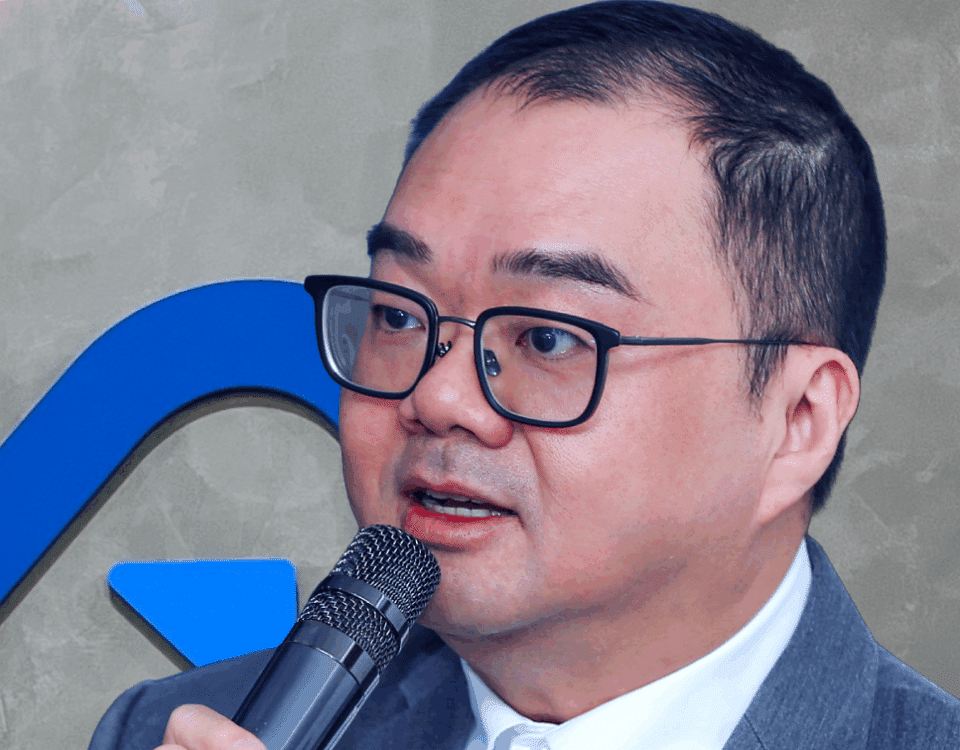
Want to scale a restaurant business? Listen to your heart.
September 7, 2019
Employee theft: Where does the problem lie?
September 18, 2019By Doug Wick
We’re all familiar with the dashboard on a car, or the dashboards pilots use when they fly. As a ScaleUp business coach, I use dashboards regularly when working with my customers to track their progress toward the big goals they’ve set for their companies. At each company, we establish a top priority for the year—known as their “One Thing” —in their annual planning. We discover their “One Thing” by asking this question: “What’s the one thing we can do, such that by doing it, everything else will be easier or unnecessary?”
Every quarter, we set key objectives the company will attack as we put the annual plan into action. We list these priorities in the dashboard, to keep track of their progress. Time and time again, I saw how powerful the simple act of using the dashboard was, sometimes helping customers to achieve multi-million-dollar revenue growth over the course of a year.
Still, I didn’t fully realize the full power of dashboards until one of my doctors told me, I had acute myeloid leukemia (AML) in February of 2012. A dashboard I created to take charge of my health played a major role in saving my life.
I was devastated and overwhelmed with fear when the doctor matter-of-factly gave me my diagnosis and told me and my family I would be confined to the hospital for a year, unable to work, if I survived that long. The outlook he conveyed was so bleak at one point, I said to him, without irony, “Why don’t you just shoot me now?”
Being the sole provider for my wife and three sons at the time, my immediate concern was what they would do without my income if I could no longer work? What would my healthcare costs be? I was sure my medical bills would bankrupt them. They would be better off if I were dead, I told myself. At least they would have my life insurance to help them get by without me.
Taking back control
Fortunately, those thoughts were fleeting. I’ve always been blessed with a positive mindset, perhaps even a naive sense of what is possible. Once I was transferred to a private room at the University of Iowa hospital in Iowa City, I began to focus on what I could control in my situation. This line of thinking led me back to my coaching practice. The area where I’d always succeeded was goal setting.
Many clients came to me when they were trying to meet ambitious goals that seemed far beyond their reach. They had stumbled, concluded the goals were unachievable and let hopelessness and inertia take hold. Working with them to fill out the dashboard showed them that there were many factors they could control. And, as they took the actions they had outlined in the dashboard and moved forward toward their goals, they built confidence and momentum.
As thought about this, something shifted in my mind. I made a conscious decision that my cancer diagnosis was not a death knell; it was a problem to be solved. And I would use the same dashboard I used to help clients reach their business goals to defeat cancer.
Putting structure around the goal
The process of filling out a dashboard starts with getting clarity about what you want to achieve. My goal was to eliminate my cancer. That displaced my traditional business goals, such as acquiring a new ideal customer.
But goals that don’t get measured don’t get achieved. I also put in place a metric for tracking my success: Getting a bone marrow transplant, which I would need to be cured. I’d entered the hospital with 84% of my bone marrow cancerous, so I did not qualify for a transplant at the time. Further complicating my AML was the discovery I had Monosomy 7, a rare form of AML, where the 7thpaired chromosome in my bone marrow is missing. To survive, I’d need to improve my health to the point that I could qualify for a transplant.
That was a daunting goal, given that five rounds of chemo had not worked. To keep my mindset in the right place, I read affirmations every morning. One by the spiritual leader Emmet Fox helped me change my thought patterns:
“Bless a thing and it will bless you. Curse it and it will curse you. If you put your condemnation upon anything in life, it will hit back at you and hurt you. If you bless a situation, it has no power to hurt you, and even if it is troublesome for a time, it will gradually fade out, if you sincerely bless it.”
Finding an accountability partner
In my business coaching practice, I found that clients made more progress if we met weekly than if we took a few weeks off because of a busy travel schedule or the like. They didn’t want to come to a meeting saying they had done nothing to move forward.
I set up the same situation for myself. My second week in the hospital, I happened to meet by video with a former customer and good friend, Alan Fendrich, who now lives in Israel. He recommended a book to read, Joe Dispensa’s Breaking the Habit of Being Yourself: How to Lose Your Mind and Create a New One. It outlined meditation as a practice to follow in order to achieve a specific result.
One of Dispensa’s messages had a big impact on my thinking: Illness takes hold when there is a specific environment in the body, and our thoughts and emotions contribute to that environment. If you change your thoughts, you can change the environment in the body and make it inhospitable to disease.
Every Wednesday, as I shared my progress in learning meditation, Alan, as my unofficial accountability coach, would say, “Doug you’re not following the process!” To which I would reply,
Creating the dashboard
In my business coaching, I found that when I asked clients to name the actions that would help them move toward their goals, they often rattled off 10 or more. By helping them to narrow the list and focus on just a few actions that really mattered, I helped them speed their progress.
I took the same approach with my health dashboard. Initially, my list included the following:
- Keep a positive attitude
- Exercise daily
- Eat healthy
- Keep my blood sugar in the normal range (I have diabetes)
- Meditate
- Research avenues for recovery/treatment
Finally, I narrowed these down to the three I saw as most essential to saving my life:
- Meditate daily on what I want
- Research avenues for recovery/treatment
- Keep a positive attitude
How did I know these activities were the most important? I didn’t. I based my decisions on gut instinct and faith. The actions that made the final cut were the ones that gave me the greatest confidence I’d achieve my desired outcome.
Track your progress
Before I became a coach, I worked in radio as a sales manager. I could accurately predict our sales each month based on the number of calls our salespeople completed and the dollar value of the proposals our salespeople were presenting.
Most salespeople were successful approximately 25% of the time in closing their presentations. If their goal was to achieve $10,000 in sales for the month, they would need to present $40,000 a month in proposals to prospects, or about $10,000 a week.
I applied that same thinking to the work I had listed in my dashboard, assigning metrics to each one so I could predict the outcome. For instance, when it came to meditating, I decided I needed to practice once a day to improve my health. I had no scientific basis for deciding meditation once a day would get me to my goal. I simply trusted what my body and mood were telling me. Sometimes I meditated twice a day if I felt it would help my situation.
As to researching avenues for treatment, I decided to do daily Google searches. I also asked friends for recommendations on alternative treatments. Often, I decided not to follow up on treatments I’d read about for one reason or another, but being informed gave me a feeling of control over my situation that, I believe, contributed to a better emotional state.
As to keeping a positive attitude, I continued a habit I’d formed before my cancer diagnosis of reading a list of affirmations each morning to start my day. During that time, I often re-read the section of Jim Collins’ Good to Great on the Stockdale Paradox, which gave me a spark of optimism and the confidence I could and would succeed.
Admiral Stockdale was the highest-ranking naval officer to be held prisoner during the Vietnam War. From 1965 until his release in 1973, his captors tortured him more than 20 times. He never had much reason to believe he would survive the prison camp and someday get to see his wife again.
However, Stockdale chose to have faith that he would. “I never doubted not only that I would get out, but also that I would prevail in the end and turn the experience into the defining event of my life, which, in retrospect, I would not trade,” he said. “You must retain faith that you will prevail in the end, regardless of the difficulties. AND at the same time…You must confront the most brutal facts of your current reality, whatever they might be.”
His words resonated with me. I’d seen plenty of times, how, against overwhelming odds, teams and individuals had overcome and achieve miraculous outcomes. I chose to believe I could, too. When my confidence flagged, I’d read about leaders like Abraham Lincoln, Martin Luther King, Jr., William Wallace, Marie Curie, Thomas Edison and Joan of Arc. Sometimes, I’d watch a movie like Gandhi, which reminded me of the patience, confidence, and faith he held in freeing India from domination by Great Britain.
Every one of these individuals had a concept in his or her mind of a potential future reality. This vision was alive in an inner world of possibilities beyond the senses, and in time, each of these people made those ideas a reality
The phone call that finally came
Late one August evening in 2012, I was sitting outside on my patio. It was about 9:30 on a warm July evening. I’d been allowed to go home to await the results of my biopsy from my clinical trial. Inside the house, my phone rang. My wife handed the phone to me through the sliding doors. One of my physicians, Dr. Carter, was on the phone. “Doug I don’t normally call my patients this late at night, but then I don’t usually have news this good,” he told me. “Your biopsy came back and there is absolutely no trace of cancer in your bone marrow. You are complete free of your AML!”
A sense of relief, wonder, awe and gratitude filled me as tears rolled down my cheeks!
When I asked Dr. Carter in May of this year what my chances of survival had been at that time, he said zero percent. I’ll never know exactly what allowed my body to heal to the point I could get a bone marrow transplant, but I’m glad I used my dashboard to turn a seemingly insurmountable situation into one where I discovered I had more control than anyone would think.
Doug Wick is the owner of Positioning Systems. Follow him on LinkedIn at https://www.linkedin.com/in/douglas-wick-b178432.




